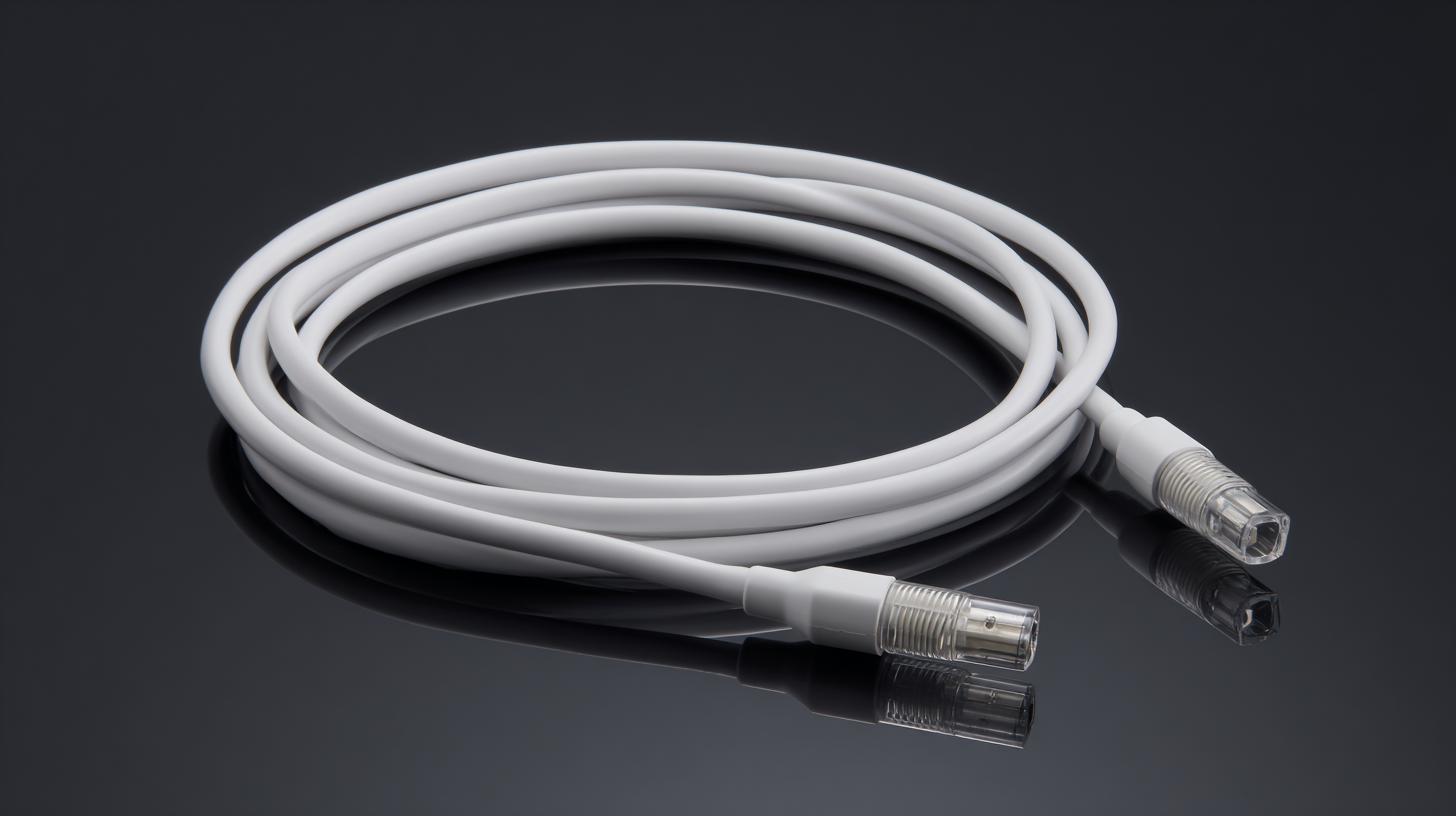Leave Your Message
In the rapidly evolving landscape of high-speed networking, the 400G QSFP-DD AOC (Active Optical Cable) stands out as a pivotal technology driving connectivity and efficiency in data centers and enterprise networks. According to recent market research, the global market for 400G optical transceivers is projected to reach $3.65 billion by 2025, reflecting a CAGR of 35% from 2020. This growth is fueled by the increasing demand for bandwidth, driven by data-intensive applications such as cloud computing and big data analytics. Premium Chinese manufacturing plays a crucial role in this sector, providing innovative solutions that enhance performance while maintaining cost-effectiveness. As we delve into the finest 400G QSFP-DD AOC offerings, we explore how these advanced products are poised to reshape network infrastructures, meeting the acceleration of digital transformation and the ambitious goals set forth in the "Industry 2025" technology trends.

The 400G QSFP-DD Active Optical Cable (AOC) technology has emerged as a cornerstone for high-bandwidth applications in data centers, enterprise networks, and telecommunications. As demands for faster data transmission continue to surge, the QSFP-DD AOC provides a reliable solution. According to a recent report by MarketsandMarkets, the global optical transceiver market is projected to grow from USD 3.4 billion in 2021 to USD 8.1 billion by 2026, highlighting the critical role of technologies like the 400G QSFP-DD AOC in meeting this burgeoning need.
With its form factor allowing for high density and reduced power consumption, the 400G QSFP-DD AOC supports distances of up to 300 meters over multimode fiber, making it ideal for modern short-range applications. Research from the Optical Internetworking Forum indicates that using AOCs can significantly reduce overall network setup costs compared to traditional copper cables, with savings up to 30%. This efficiency is essential as enterprises seek to optimize their infrastructures to handle increasing data traffic and improve performance in cloud and edge computing environments.
When it comes to the world of optical cables, specifically the 400G QSFP-DD Active Optical Cable (AOC), premium Chinese manufacturing stands out for its exceptional quality and innovation. One of the key features of this manufacturing process is the rigorous quality control standards that ensure each product meets international benchmarks. This commitment to excellence not only enhances performance but also increases the longevity of AOC solutions, making them a superior choice for data centers and enterprise networks.
Tips: When selecting a 400G QSFP-DD AOC, consider the specific requirements of your network to ensure compatibility and optimal performance. Look for manufacturers that offer robust warranties, which can provide peace of mind regarding product reliability.
In addition to quality, premium Chinese manufacturers often leverage the latest advancements in technology, such as enhanced thermal management and energy efficiency. These innovations help reduce operational costs and improve overall system performance. By choosing products from these manufacturers, users can benefit from reduced latency and increased bandwidth, leading to a more seamless data transmission experience.
Tips: Regularly update your networking infrastructure with the latest AOC technologies to fully harness the advantages of enhanced speed and efficiency. This proactive approach can significantly boost your network's capabilities while minimizing downtime.
| Feature | Description | Benefits |
|---|---|---|
| Data Rate | Supports up to 400 Gbps | High speed data transfer for demanding applications |
| Cable Length | Available in lengths from 1m to 30m | Versatile options for various installation needs |
| Connector Type | QSFP-DD compliant | Robust connection ensuring compatibility with multiple systems |
| Power Consumption | Low power consumption design | Cost-effective solution with reduced energy costs |
| Environmental Resistance | Designed to withstand extreme temperatures and humidity | Reliable performance in diverse environments |
| Quality Assurance | Stringent testing standards and certifications | Assurance of product quality and reliability |
In recent years, the optical transceiver market has experienced substantial growth, particularly with the increasing demand for high-capacity data transmission. One notable trend is the rise of 400G QSFP-DD AOC (Active Optical Cables) as a preferred option for data center networks, outperforming traditional transceiver models. Unlike other options, such as 10G and 40G transceivers, which support lower data rates, 400G QSFP-DD AOCs provide a significant leap in bandwidth, making them ideal for the expanding needs of cloud computing and 5G applications.
The ongoing shift towards cloud services has driven data centers to seek scalable, efficient optical connectivity solutions. This evolution highlights the urgency for industry players to adopt advanced technologies like those found in 400G QSFP-DD AOCs, which leverage innovative manufacturing processes from leading Chinese suppliers. As companies increasingly prioritize high-speed data transfer capabilities, understanding the comparative advantages of 400G technology over older models is vital for staying competitive in the photonics landscape. The emphasis on pluggable optics, particularly in cloud environments, suggests a robust future for 400G solutions as the demand for seamless, fast, and reliable connections continues to grow.

When selecting a 400G QSFP-DD Active Optical Cable (AOC) for your network, it's crucial to consider various factors that can significantly impact performance and deployment. Key considerations include the specific application requirements, such as distance and environment. With network demands skyrocketing, a recent report indicates that the global optical transceiver market is expected to grow at a CAGR of over 15% through 2027, driven primarily by the adoption of 400G technology across data centers and telecommunications.
Moreover, advancements in transceiver technology have led to the introduction of new options such as the 400G ZR transceivers, designed to support longer distances in varied environmental conditions. This evolution is essential for organizations looking to enhance their network's capability without incurring excessive costs. For AI and machine learning applications, where high-speed data transfer is paramount, specialized AOCs are now available, enabling seamless connections between top-of-rack switches and other critical components within the infrastructure.
Why does this matter? As network architectures become increasingly complex, ensuring compatibility and optimal performance of your optical connections is key. When choosing a 400G QSFP-DD AOC, it is advisable to analyze the specifications carefully, including factors like cable length, attenuation, and power consumption, to ensure it meets the unique demands of your network environment.
This bar chart illustrates the performance metrics of 400G QSFP-DD AOC cables, focusing on cable length, insertion loss, reach, and power consumption. These metrics are essential in evaluating the suitability of AOC for your network needs.
The demand for higher bandwidth and faster data transmission continues to drive the evolution of fiber optic technology. As we move into an era defined by 5G networks, cloud computing, and the Internet of Things (IoT), the importance of Active Optical Cables (AOCs) becomes ever more pronounced. AOCs offer a lightweight and flexible solution, providing significant advantages over traditional copper cables, including reduced power consumption and increased data transmission distances.

